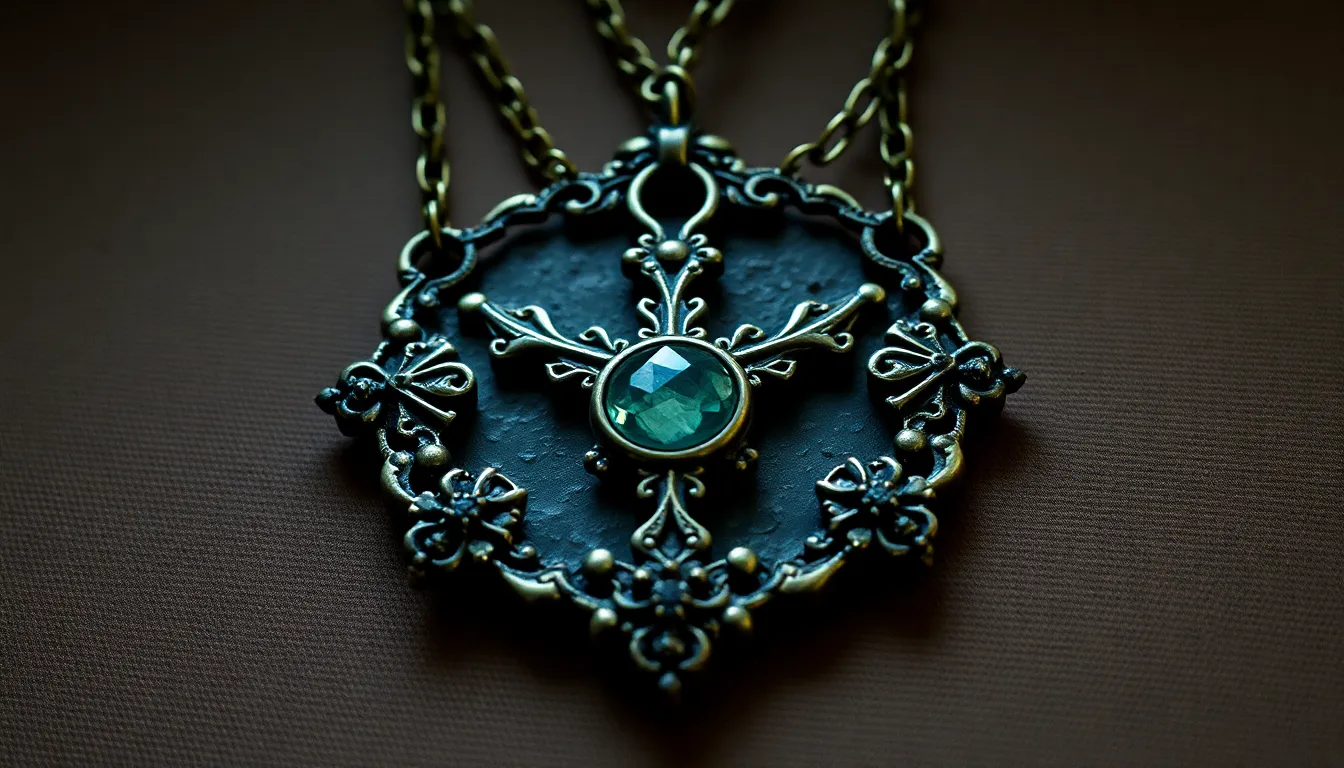The Cursed Necklace: 6 Artifacts That Haunt Their Owners
I. Introduction
The concept of cursed artifacts has intrigued humanity for centuries, sparking tales of misfortune and eerie happenings. These objects, often steeped in history and folklore, are believed to bring bad luck or calamities to their owners. From ancient relics to modern curiosities, cursed items have become a staple in popular culture, leading to countless stories and myths about their sinister effects.
In this article, we will explore six notorious artifacts, including a cursed necklace that has captured the imagination of many. Each of these items carries its own tale of woe, intertwining history with the supernatural.
II. The Cursed Necklace: Origins and Legends
The infamous cursed necklace, often referred to as the “Necklace of the Cursed,” has a dark and storied past. Historical records suggest that it was crafted in the 18th century and was adorned with exquisite jewels, making it highly sought after by aristocrats.
Throughout its history, the necklace has changed hands numerous times, leading to a series of tragic events for its owners. Notable figures who owned the necklace reportedly faced financial ruin, illness, and even untimely deaths. Common themes in the legends surrounding the necklace include:
- Sudden wealth followed by catastrophic loss.
- Illness or madness attributed to its possession.
- Strange occurrences in the lives of the owners, including unexplained accidents.
III. The Hope Diamond: A Jewel of Misfortune
The Hope Diamond is one of the most famous jewels in the world, renowned not only for its beauty but also for the curse that allegedly follows its owners. This stunning blue diamond has a rich history, originally mined in India and later making its way to Europe.
Throughout its existence, the Hope Diamond has been linked to a series of misfortunes:
- King Louis XVI and Marie Antoinette faced execution during the French Revolution.
- American socialite Evalyn Walsh McLean experienced personal tragedies, including the deaths of her children and husband.
- Many owners have reported financial disaster following their acquisition of the diamond.
While some attribute these tragedies to folklore, others suggest psychological explanations, such as the power of suggestion leading individuals to perceive their experiences as cursed.
IV. The Black Orlov Diamond: A Stone of Betrayal
The Black Orlov Diamond, another jewel shrouded in mystery, has been called the “Eye of Brahma” and is said to have originated from India. Its dark history includes claims that it was stolen from a statue of a Hindu god, leading to a series of misfortunes for its owners.
Notable accounts of tragedy surrounding the diamond include:
- The suicide of its first known owner, a Russian princess.
- Death and misfortune befalling those who owned the diamond afterward.
- Widespread fear and superstition about the diamond’s malevolent nature.
The Black Orlov has left a significant mark on popular culture, inspiring numerous books, films, and articles exploring its cursed legacy.
V. The Crying Boy Painting: A Haunted Artwork
The Crying Boy painting, created by artist Giovanni Bragolin, became infamous in the 1980s when it was linked to a series of house fires in the UK. Despite the destruction of homes, the painting itself was said to remain unharmed.
Allegations of fire-related tragedies tied to the painting include:
- Multiple reports of homes that contained the painting burning down.
- Claims that the painting was cursed and brought misfortune to its owners.
Psychological interpretations of this phenomenon suggest that belief in the curse may have been fueled by collective anxieties about fire safety and superstition.
VI. The Terracotta Army: The Curse of the First Emperor
The Terracotta Army, discovered in the tomb of China’s First Emperor, Qin Shi Huang, is a remarkable archaeological find. However, legends suggest that the emperor placed a curse on his burial site to protect it from grave robbers.
Myths surrounding the curse of the first emperor include:
- Claims that those who disturb the tomb will face dire consequences.
- Reports of misfortunes experienced by archaeologists involved in the excavation.
These tales add a layer of intrigue to the already fascinating history of the Terracotta Army.
VII. The Busby Stoop Chair: A Seat of Death
The Busby Stoop Chair is a notorious artifact believed to bring death to anyone who sits in it. The chair, linked to a local murderer named Thomas Busby, is said to have been cursed after Busby’s execution.
Accounts of deaths attributed to sitting in the chair include:
- Reports of visitors who sat in the chair and later died in mysterious circumstances.
- Legends suggesting that even the most fearless dare not test the curse.
The chair is currently displayed in a museum, where it continues to attract the curious and the superstitious.
VIII. The Annabelle Doll: A Modern Haunting
The Annabelle doll, a seemingly innocent child’s toy, has become a symbol of modern hauntings. Associated with paranormal investigators Ed and Lorraine Warren, the doll is said to be possessed by a malevolent spirit.
Accounts of paranormal activities associated with the doll include:
- Reports of strange occurrences in the presence of the doll, including movement and unexplained noises.
- Stories of individuals who have experienced misfortunes after coming into contact with Annabelle.
The doll’s portrayal in films, particularly in “The Conjuring” series, has solidified its place in horror culture, further popularizing the narrative of cursed objects.
IX. The Psychology of Belief in Cursed Artifacts
The belief in cursed artifacts raises intriguing questions about human psychology. Many people are drawn to the idea of curses due to:
- A natural inclination toward superstition and folklore.
- The psychological effects of suggestion and confirmation bias.
- A fascination with the unknown and the potential for the supernatural.
Modern psychological theories suggest that belief in curses may stem from deep-rooted fears and the need to make sense of tragic events.
X. Conclusion
Cursed artifacts weave a complex tapestry of history, superstition, and psychology. From the cursed necklace to the Annabelle doll, these objects remind us of the thin line between reality and the supernatural. Whether viewed as mere folklore or as genuine sources of misfortune, the stories behind these artifacts continue to captivate and haunt us, inviting exploration into the mysteries of belief and the human experience.



